11 Dic SOLER Y LLACH CLOSES THE YEAR WITH STUNNING OFFERS
Since its foundation in 1989, Soler y Llach is an auction house specialized in Philately, Books, Manuscripts and Poster Art. They are pioneers of monothematic sales in Spain showcasing auctions such as Posters Art (first sale in February 2001), Movie Memorabilia (June 2003) and Photography (March 2006). Soler y Llach is holding an auction on the 12th of December at 4 p.m. in their premises of 13 Beethoven street in Barcelona.
From this sale, several lots are standing out such as number 43: Bibliotheca Arabico-Hispana Escurialensis sive librorum omnium (All of l’Escorial Spanish Arabian books) created in 1760 by Michaelis Casiri. The text is separated in two columns with heading and capital letters, French leather binding, raised bands, spine labels and gilded edges. As a bookmark we encounter a ribbon and the book is entirely organized by themes. The margins are wide and the work is monumental in itself. Concretely, this book catalogues all Arab manuscripts present in the Escorial Library. For the first time in Spain, the impression was made with Arab characters. Miguel Casiri came to the Escorial only to achieve this particular project (Gharcieh al-Ghaziri). However, he managed to stay as a permanent member of the library. Lot 43 is going up for auction at 3.500€ (see).
Lot 120, Ensayo sobre el arte de navegar por debajo del agua (Essay regarding the art of navigating under water) by Narciso Monturiol. It was printed in 1891 in Barcelona by Heinrich & co. Press and contains: 237 pages, a portrait of Monturiol in topographical borders and 3 folded prints. It also presents rustic binding with false covers. Monturiol was a Humanist and an inventor during the 19th century. He is especially known for inventing the Ictíneo: a crewed submarine autonomously propelled by a chemical and anaerobic motor. This essay goes up for auction for 1.000€ (see).
Let’s continue with Lot 6: Arte cisoria, o tratado del arte de cortar del cuchillo (Cisoria Art or treaty on the art of cutting with a knife) written by Henrique de Aragón the marquess of Villena in 1766. It is considered to be the oldest book regarding cuisine and etiquette in the Castilian language. It was printed in Madrid by Antonio Marin and holds 197 pages with topographical borders, framed text and wood engravings. It goes up for action for 1.000€ (see).
The 1630 Bible of Ferrara was composed in the Spanish language, holds 293 folios and presents some lacunae. This bible consists of a translation from Hebrew to Judaeo-Spanish made by Portuguese men Duarte Pinel and Gerónimo Vergas. It’s offered for 1.000€ (see). In lot 506 we encounter The Ingenious Nobleman Sir Quixote of La Mancha by Miguel de Cervantes Saavedra. This edition was printed by the National Spanish Press in the year 1862 in 3 volumes. These contain respectively 389, 430 and 391 pages, a total of 37 engraving plates, a double paged map and 2 facsimile sheets. The drawings represent Joseph del Castillo, Antonio Carnicero, Joseph Brunete, Bernardo Barranco, Geronimo Gil, Gregorio Ferro and were engraved by Geronimo A., Fernando Selma, M. Salvador Carmona, P.P. Moles, Joaquin Fabregat, Joaquin Ballester, Francisco Muntaner and Iuan Barcelon. It also includes an original photography by Martí showing what is believed to be the jail where Cervantes was incarcerated when he started writing his novel (House called of Medrano, en Argamasilla de Alba). The third volume contains a biography of Cervantes written by Jerónimo Morán, a critical analysis by Vicente de los Ríos and a catalogue of previous editions of the Don Quijote. It goes up for auction for 2.500€ (see).
Continuing on the same theme, a second exemplar of The Ingenious Nobleman Sir Quixote of La Mancha is up for auction. This copy dates from 1605. The first and the last pages are missing, probably since before its actual parchment bidding was realized. There is a handwritten note at the bottom of the guard page that reads: “The oeuvre is complete in this volume at the exception of the ultimate chapter, number 52 which has pages missing.”. This exemplar corresponds to the first impression of two, realized by Pedro Patricio Mey (Valencia) where the page 162 is marked as 192. A mistake that we know has been corrected in the second edition. The license to print this book in Valencia was obtain in 1605 with a duration of 10 years. It is offered for 5000€. (see)
- Ferrara’s Bible
- Miguel de Cervantes Saavedra, The Ingenious Nobleman Sir Quixote of La Mancha, 1862.
- Miguel de Cervantes Saavedra, The Ingenious Nobleman Sir Quixote of La Mancha, 1605
In the section dedicated to manuscripts, lot 528 stands out: a book from 1462 written during the Castilian-Aragonese Succession War and including 3 documents signed by Henry IV of Castile and the Count of Barcelona. The first document reads as follows: “ a todos e qualesquier capitanes e gentes de armas de cavallos e de pie d´estos plkiemis rregnosque por mi mandado estades en el rreyno de Aragón e en el prinçipado de Catalueña e qualsequier capitanes e cavalleros e gentes de armas e conçejos de qualesquier çibdades e villas e logares e castillos e fortalesas de dicho rregno de Aragón e prinçipado de Catalueña que por mi e en mi serviçio e obediençia estades”. Within this document we also find a handwritten court letter, a small folio with the signature YO EL REY (I THE KING), it also presents the signature of Alvar Gómez from Ciudad Real and a wax sell on the back. In the second document, the king notifies the reader that he is sending the Commandant Juan Fernández Galindo, Fernando Ribadenevra and the knight Álvaro de Mendoza. At last, the third document notifies that these three same knights are being sent to Catalonia and Aragón. This lot is offered at auction for 2.500€ (see).
This sale also holds an assemblage of 13 letters written in 1822-1823 by the government or the Trienio Liberal’s Army. The destinations of all these letters was the city of Perpignan. The name of Adre Claus appears on some of them, but on others the recipient name has been crossed out. This makes us think that Adre Claus was the only receiver of all this correspondence. The letters originated from Figueres and Barcelona and informed of the movements and important events regarding the constitutionalist and royalist troops. The first letters date from the 6th, 23rd, 26th and 30th of October 1822 and are written in French. They report on the resistance met in Castellfollit de Riubergós (Barcelona) during Espoz y Mina conquest of the city. Another letter dating from the 25th of October and signed by José Camps reports the news publicly. The letters from 1823 originated from Figueras and all present the same handwriting at the exception of the 1st and 21st of March; as these came from Barcelona and were written in French. The messages from Figueres also include the author’s opinion regarding the political situation in Spain and signs F. de P. y B.. In all of these letters we find proclamations in favor of freedom and firmness. For example, the letter dated on the 13th of March reports that men of Madrid’s city council: “have spoken to the King in a language common to the free men”. This same letter reports Barcelona’s city council shows the example as they refused to take advantage of a privileged granted to Catalonia; the opportunity to avoid having to send conscripts to war by paying a certain sum. In the letter dated from the 5th of March F. de P. y B. (who is believed to be the General Francisco Perena) he exposes in a much clearer and personal way his opinion regarding the evolution of these events. This lot is up for sale for 700€ (see).
- Manuscript regarding the Castilian-Aragonese Succession War with three documents signed by Henry IV of Castile.
- Assortment of thirteen letters written by the government or by the Trienio Liberal Army.
Inside these manuscripts lies two handwritten letters signed by the author Rudyard Kipling. One of them comes with its original envelope and both are addressed to his editor in London from Ciudad el Cabo. This lot is up for sale for 240€ (see). Two more handwritten letters this time by Charles Baudelaire himself are available in lot 598. One these message is dated December 1859 and was designated to his mother. This lot will be auctioned for 200€ (see).
In the map section we encounter 2 lots that we would like to highlight. The first corresponds to 1691’s: Arme delli Regni di Spagna, parte oriental y parte occidental della Spagna (Arms of the Reign of Spain, east and west coast of Spain). The map is divided into 2 plates of equal dimensions (62.5 x 48 cm). On the inferior right corner of the oriental plate, we observe a grand cartouche depicting the coats of arm of each province crowned by a lion couchant. On the superior part, a large cartouche held by an elephant, an eagle and a lion is illustrated. It goes up to auction for 650€ (see). The second one is a splendid Atlas: Le Nouveau Grand Illuminant Flambeau de la Mer by Jean van Keulen and Claas Jansz Voogt illustrating the coasts of Granada, Murcia, Valencia, Catalonia, Languedoc, Provence, Italy, Dalmatia, Greece, Thrace, Anatoly, Syria, Egypt and the entire northern coast like Ibiza, Majorca, Minorca, Sardinia, Corsica, Sicily, Malta and Cyprus. Edited in 1720, this lot goes up for auction for 5.000€ (see).
Finally, we encounter the magazine “La Madeja Política” (The Political Skein) printed by Luis Tasso in Barcelona between 1873 and 1875. This edition of the 19th century satirical publication is almost complete. It also holds remarkably well preserved colored lithographs on the central page. A total of 72 issues are offered in this lot with 50 printed between the first and the second year and 22 in the third. In resume, these magazines consists of high quality lithographs including caricatures of Spanish life at the end of the 19th century. This lot is offered for 500€ (see).
Translated by: Camila Jourdain.
Mariana de Ceballos-Escalera.
Especialista en pintura moderna, tasadora y perito. Graduada en Historia del Arte por la Universidad de Salamanca.
Más noticias de Arte
Fundador, The Art Market Agency.
Experto en marketing online con más de diez años de experiencia ayudando a empresas a crecer en el entorno online. Conocedor de las principales plataformas de comercialización del sector arte y de cómo sacarles el mejor partido para rentabilizarlas.



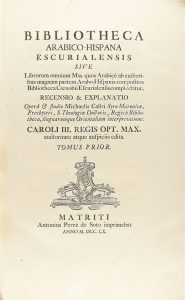
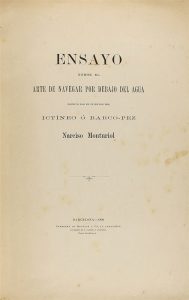
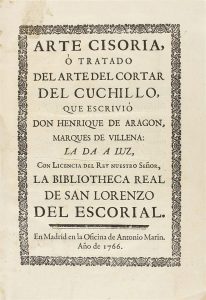
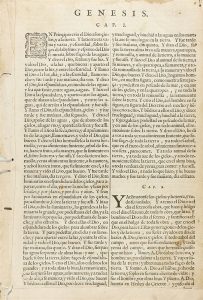
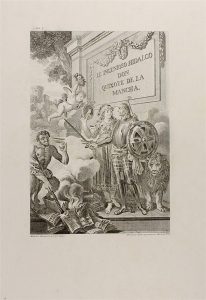
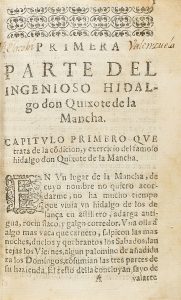
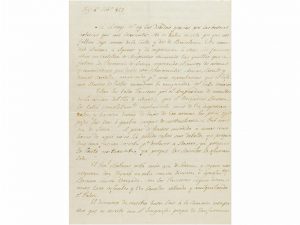
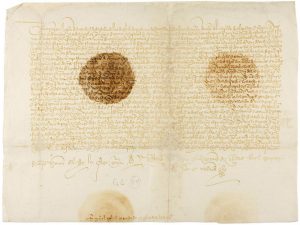


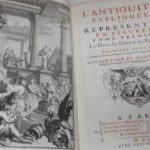
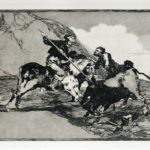

No Comments